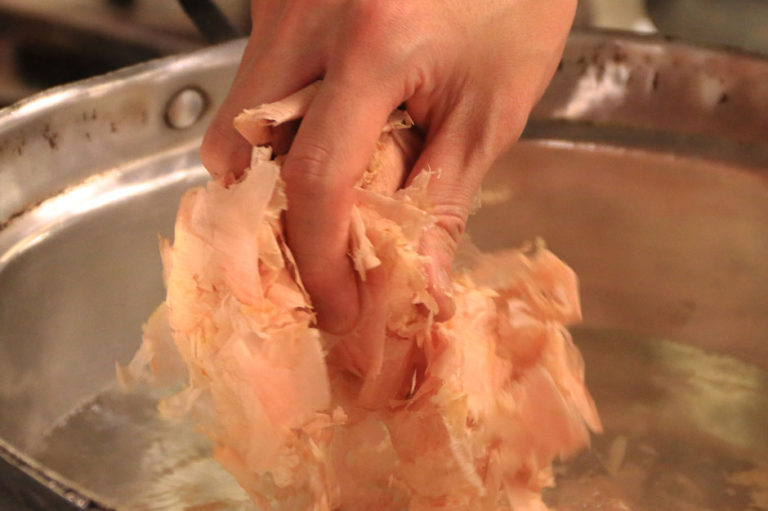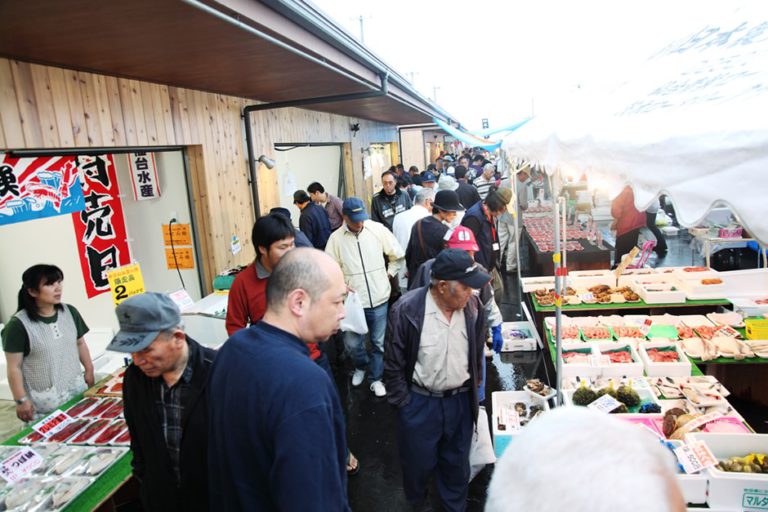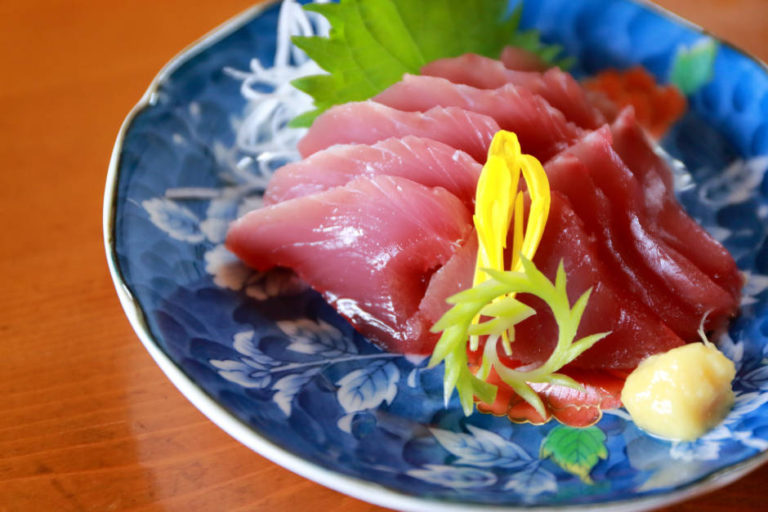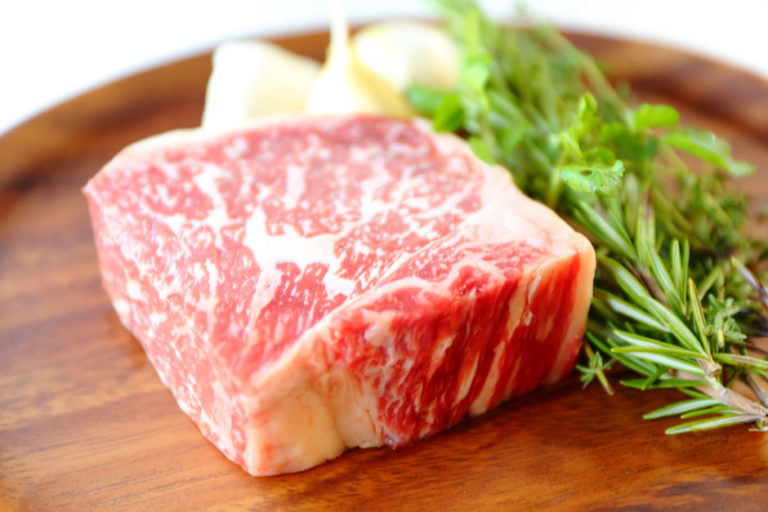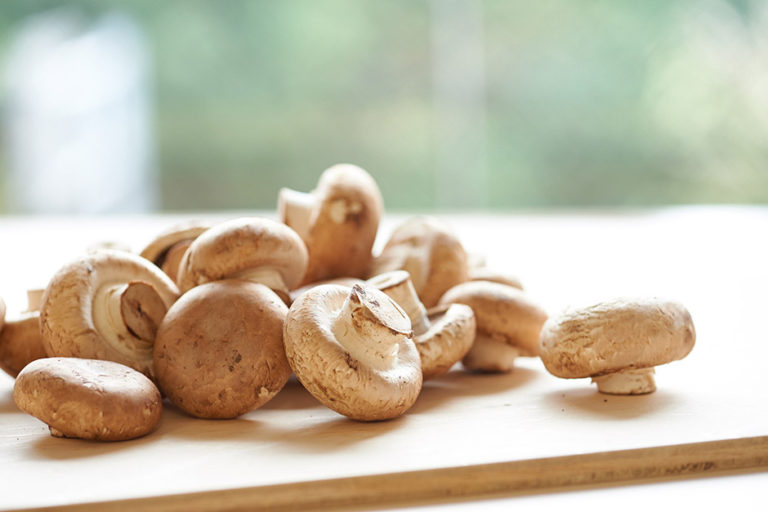Makurazaki boasts a proud tradition of producing the finest katsuobushi
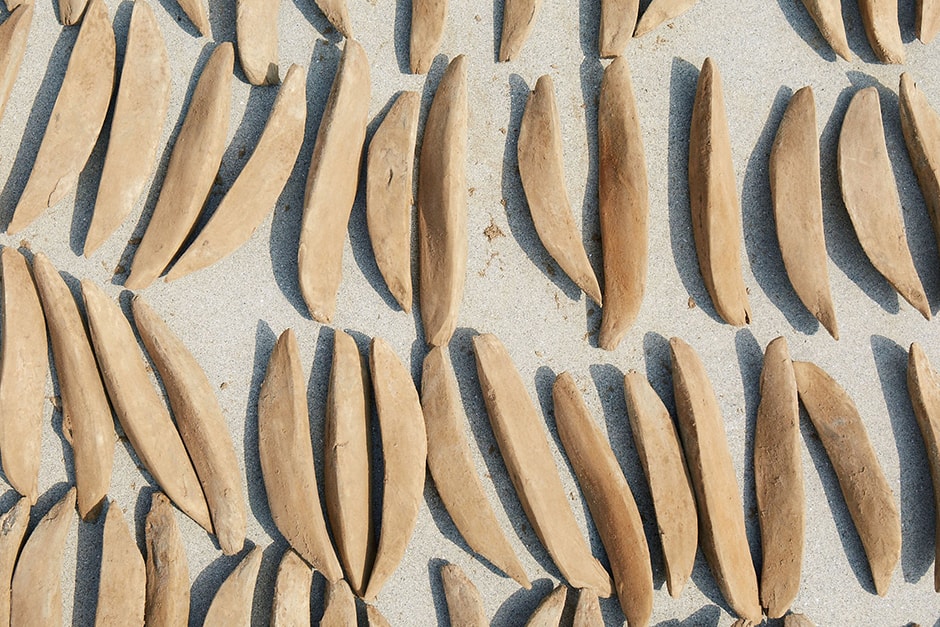
Makurazaki katsuobushi is like a jewel
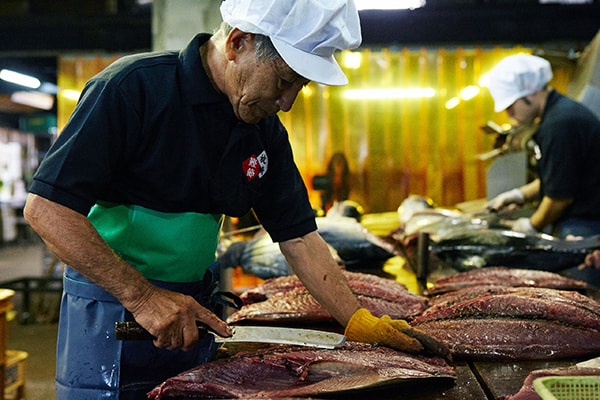
Dashi is an integral part of the subtle flavor of Japanese cuisine, and katsuobushi is an integral component of dashi. katsuobushi has a very long history that extends back to Japan’s oldest written work, the Kojiki (Records of Ancient Matters), where it is referred to as katauo. katsuobushi was first produced in Makurazaki in 1707. Many of the time-honored manual techniques used back then are still employed to this day.
Hayashi-Kyuemon-Shoten (better known as Kyuemon) specializes exclusively in katsuobushi produced in the Makurazaki tradition. We spoke to Kyuemon president Goichiro Hayashi. “The southern Satsuma region offers plentiful sunlight and cooling sea breezes,” explains Hayashi. “It is the perfect climate for producing karebushi, a special type of katsuobushi that is matured through multiple repetitions of cultivating mold on the fish then drying it in the sun. The intense summer sun in particular produces a deep coloration and strong flavor. “The finest quality katsuobushi is called honkarebushi. This is made from bonito harvested from the surrounding coastal waters during spring, then sun-dried and processed during the summer and packaged for shipment in autumn. Even the lower-grade arabushi is likewise made with great care and is still a quality product.”
Today we are going to visit the Kyuemon factory to see how katsuobushi is made.
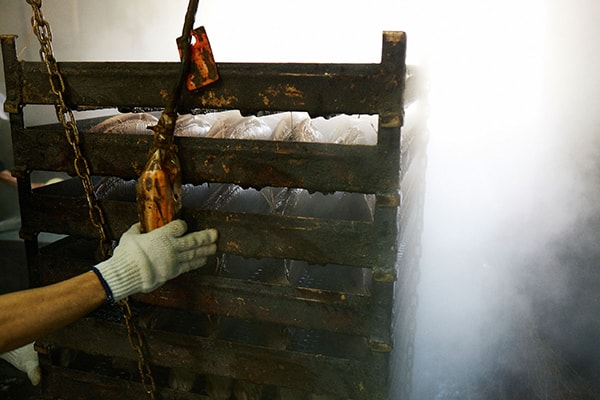
The first thing we notice is the technique for cutting the fish, known as Satsuma-giri. The raw fish is sliced open using a special type of knife known as mioroshi-hocho, where the blade curves around underneath. This technique, which can only be done by hand, is said to produce the finest cut. It requires a great deal of skill. Currently there is only a handful of people in Makurazaki capable of executing Satsuma-giri properly. Setsuo Tateishi is one of these, a genuine veteran with over 50 years of experience making katsuobushi.
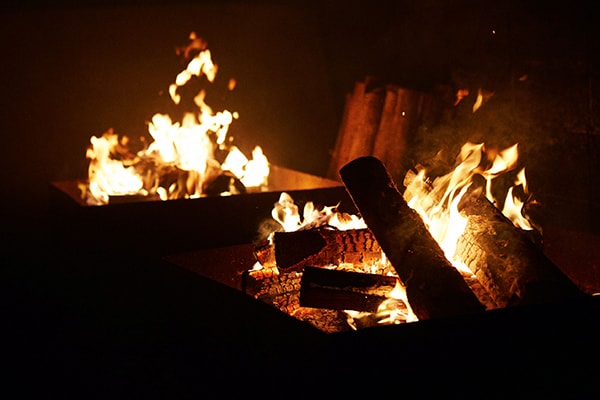
Tateishi kindly agrees to demonstrate his work. First he takes a large bonito weighing close to 10 kg and deftly slices it up, removing the head and entrails then opening out the fish into a leaf shape. The trick is to slip the knife in between the skin and the flesh at just the right depth to ensure that none of the precious flesh is left attached to the bones or to the skin. The factory is largely silent save for the soft rhythmic slapping of knives being worked through fish.
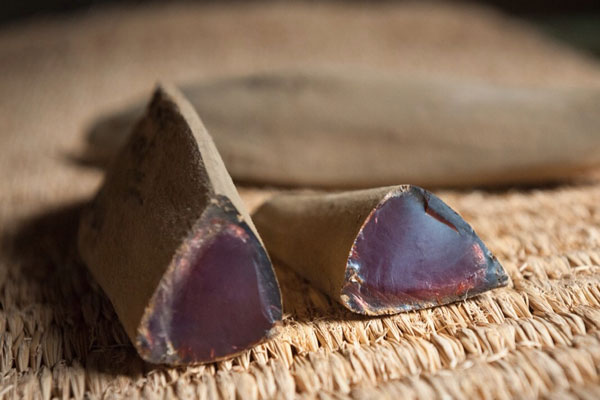
The sliced fish are arranged neatly on special woven baskets, lowered into 90°C water and boiled for an hour or two. This makes it easier to remove the bones. Next, the fish are placed in a large chamber called a kyuzoko and smoked gently for two to three weeks, both day and night. The smoke is produced from hardwoods such as sakura (cherry blossom) and oak that are sourced from the nearby mountains of Kagoshima prefecture. The fish must be constantly shifted around inside the chamber during the smoking process to ensure uniform dehydration, and of course the fire must be monitored constantly. At the completion of the drying process the katsuobushi is called arabushi, the lowest grade. The next stage involves maturation by repeatedly cultivating mold and drying in the sun, and the resulting grade is called karebushi. The highest grade, called honkarebushi, is made by cultivating mold then drying in the sun several times over a period of about six months. Honkarebushi is extremely hard and has a translucent red hue when cut. In fact, it looks very much like a rare jewel.
Fishing is part of life in this town
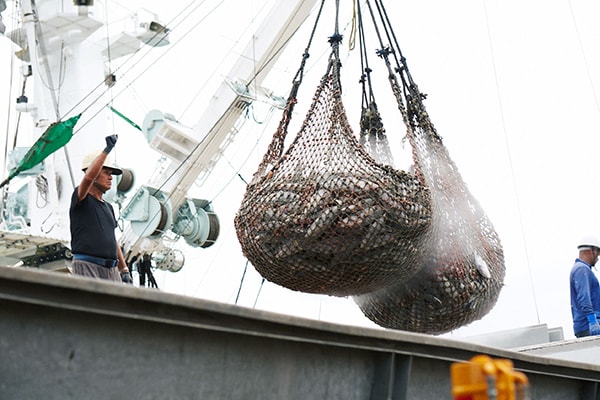
At the factory we receive word that a shipment of bonito has just come in, so we rush down to the docks to see. As we approach we can hear a thunderous roar, which we soon discover is the sound of thousands of frozen fish being unloaded from the ship. The deafening noise can be heard throughout the township, but the locals are of course all quite used to it by now.
The port of Makurazaki handles about 50,000 tons of bonito per year. Graders pick through the catches to identify the most suitable fish for making katsuobushi. Next we visit Ryota Hatano from Hatano Marine Produce, who makes katsuobushi for Kyuemon. In most cases Hatano can determine whether a particular bonito will be good for making katsuobushi based on appearance alone.
Next we visit Ryota Hatano from Hatano Marine Produce, who makes katsuobushi for Kyuemon. In most cases Hatano can determine whether a particular bonito will be good for making katsuobushi based on appearance alone. “A bonito that is skinny like me makes good katsuobushi,” laughs Hatano. “Bonito with lots of fat on them are better suited to sashimi. Smoking tends to make them taste bitter and they oxidize too easily. We are dealing with bonito on a daily basis, so we can normally get a good idea of the quality just by looking at them.”
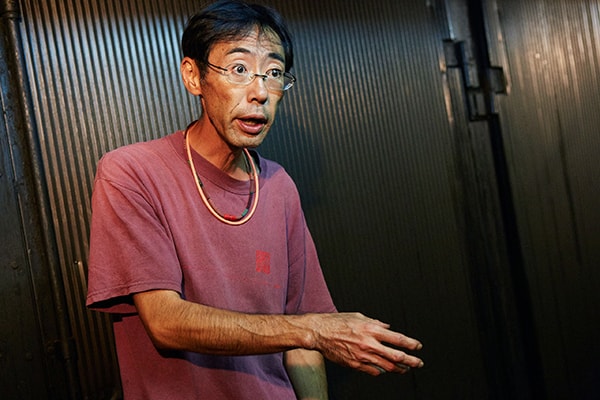
President Hayashi is proud that his team of veteran Makurazaki workers waste not a single gram of the precious bonito.
“Both the entrails that are removed in the early stages and the water left over from the boiling process are processed by contractors and sold off as special-purpose products or used to make other food products,” explains Hayashi. “DHA extracted from the bones is used in health supplements. Even the remains are powdered and used as fish bait that ultimately enriches the oceans. And the ash generated during the smoking process is used as fertilizer in the fields and mountains, and also as a soil improver where we grow trees for the smoking process. It’s all part of the sustainable recycling system that we have put in place to ensure that Makurazaki is in a position to continue producing katsuobushi for years to come.”
So there you have it. Makurazaki is committed to more than just making katsuobushi today; they want to honor and preserve their wonderful environment and climate for the future of the industry. This is evidence of the long and proud history of katsuobushi in this town.
Makurazaki katsuobushi in France
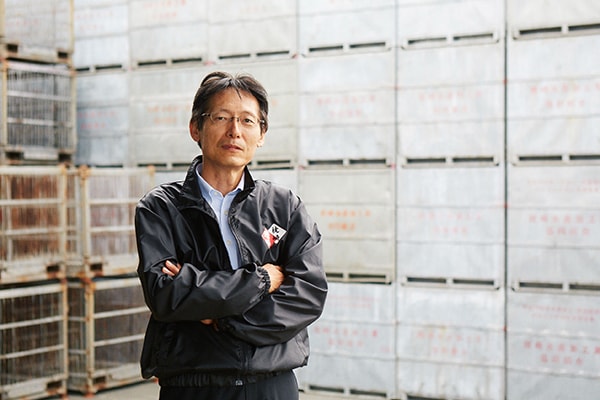
In a bid to extend the reach of Makurazaki katsuobushi to markets beyond Japan, Kyuemon has hatched an audacious plan to set up a katsuobushi factory in the port town of Concarneau in Bretagne. Although France has many Japanese restaurants, the concept of dashi is yet to take hold and katsuobushi is not widely known. The new factory will promote the delights of Makurazaki katsuobushi, dashi and the authentic flavors of Japanese cuisine to a wider global audience. The recent UNESCO listing of Japanese cuisine as an intangible cultural treasure will generate renewed interest in Japanese cooking, providing the perfect opportunity to promote katsuobushi to the wider world.
“Our mission to introduce the world to katsuobushi is motivated by the pride of our skilled artisans here in Makurazaki, who are keen to see their experience and expertise acknowledged on the global stage,” says Hayashi. “Our ultimate goal is to see ordinary French households using katsuobushi to make dashi. The first step in this process is to introduce them to the wonders of katsuobushi.” He smiles and his eyes light up as he talks about the exciting future for Makurazaki katsuobushi. Japanese cuisine is poised to take another enormous step forward on the global stage, and it all starts here at the southernmost tip of the Japanese mainland.

